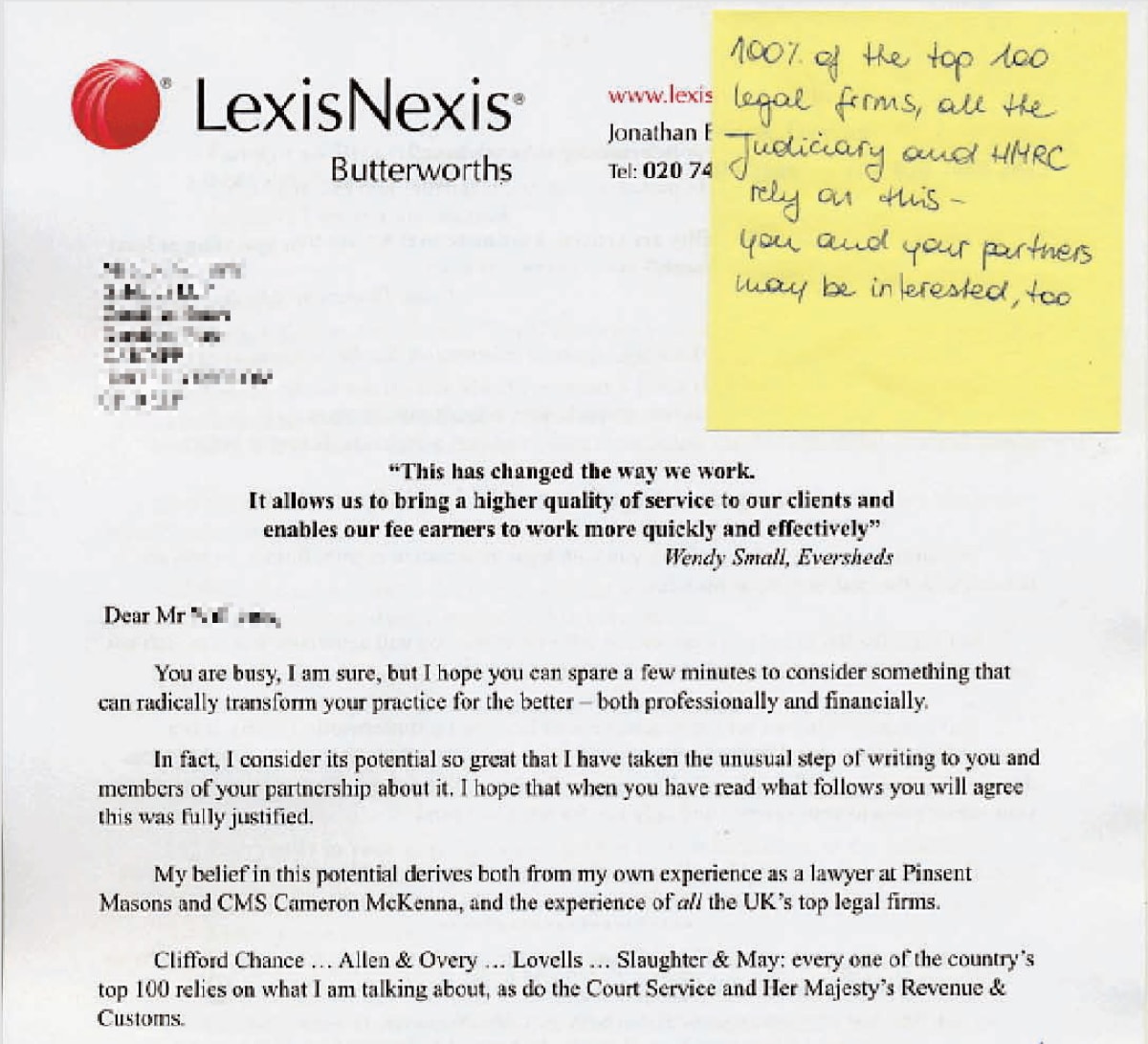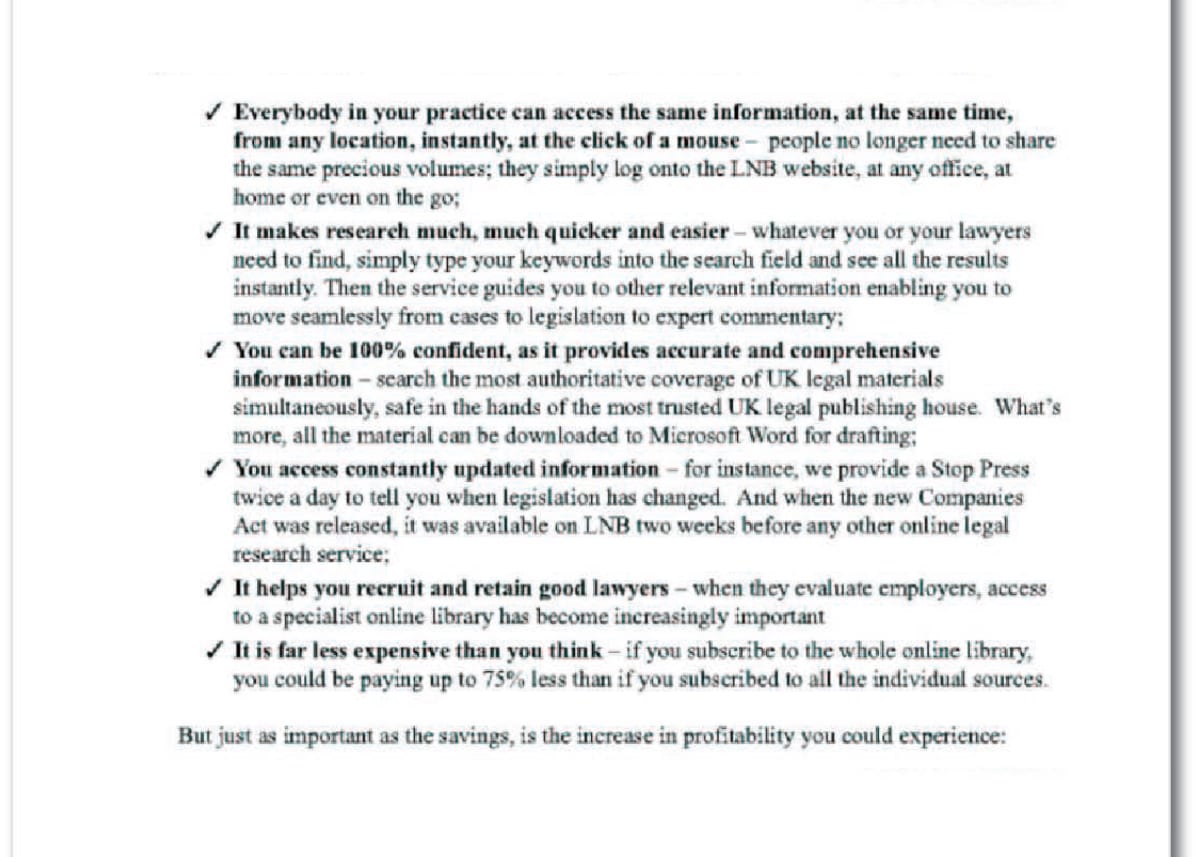Copywriting Friday: The personal touch
Published: May 2024
Copywriting Friday highlights the skill of great copywriters. Some of the examples may seem dated, but the techniques are timeless and critical for conversion rate optimization. Enjoy.
This article discusses a blunder many copywriters and marketers make, and how a master copywriter avoids the problem entirely. After reading this, you will see the blunder “in the wild” multiple times a day. More important, you’ll know how to eliminate it and make your own writing more engaging.

Drayton Bird is a legendary copywriter. David Ogilvy once said: “Drayton Bird knows more about direct mail than anyone in the world.” One of our team members at Conversion Rate Experts worked with Drayton at Ogilvy & Mather, and can attest to his skills.
Copywriters like Drayton are often tasked with selling products to large groups. In earlier times, it involved building or renting lists of thousands—or millions—of names and crafting a letter to them. Today that work usually gets done with a website or email campaign.
Drayton’s goal was to sell a research service to lawyers, and he wrote a six-page letter to do it. (This letter, as part of a campaign, generated over £2,000,000 worth of sales and several individual sales in the six figures.)
It’s all about the individual
Let’s look at how he opens the sale:

Drayton does several smart things in this opening:
- Your eye is immediately drawn to the sticky note. Even though you may not yet know what the letter is about, you read powerful social proof: all of the top legal firms, plus the judiciary, and parts of the government are customers.
- The letter is addressed to an individual with the full inside address and salutation (blurred out here). It looks like a real letter and not some “Dear Lawyer” form letter.
- There is no typical headline, but instead we see a testimonial from another lawyer as the headline. More social proof. (We discuss many ways to provide proof here.)
- Notice how the letter is from one lawyer to another: “My belief…derives from my own experience as a lawyer….”
Let’s compare how Drayton opened the sale to the blunder we alluded to earlier. What’s that blunder?
It’s speaking to a group when one person is the audience.
If you’re the coach of a football team at halftime, it’s entirely proper to say: “I have a message for all of you….” But teams do not read sales letters or website pages. Individuals do. Sales are made—and lost—one by one.
Yet think about what we hear all day long: It seems like almost all social media “influencers” start with: “What’s up everyone?” when they could just as easily say: “Hey, what’s up?”
We then watch videos on websites and elsewhere that say: “Some of you may be thinking….” when it’s just as easy to say: “You may be thinking.…” Emails say things like: “We couldn’t have done it without you—our customers.”
Then there is the perennial favorite: “Our [product or service] has solved the problem for thousands of people just like you.” They could have instead said: We solved the problem for thousands of people with [allergies or whatever] and it just might work for you, too.”
These may seem like small distinctions, but they can be powerful. Imagine that you’re standing in line to shake the hand of a celebrity. As soon as she’s right in front of you, shaking your hand, she’s looking ahead to the next person, never making eye contact with you. It’s a small thing, but you notice and it doesn’t feel good.
The writer is one of us
Individuals read your messages and listen to you. Only an individual clicks the “Add to Cart” button and takes out a single credit card. Speak to that individual.
In the sales letter, Drayton knows his audience well. He telegraphs that he’s speaking not just to an individual, but to a lawyer/colleague here:

If you’re not a lawyer, you’re going: “Huh? Who?” That’s the point. Lawyers will know those names well, but few others will. It’s how a friend would speak to another lawyer.
Later, Drayton says:

Look what he’s done with that paragraph:
- He’s appealed to your shared knowledge about the pressure being put on law firms by Parliament and the markets.
- He’s focused on “small to midsize firms in particular” and does not try to appeal to law firms of all sizes.
- By saying: “the competition you already face….”, he makes it clear that he understands the challenging environment “we” are in.
Again and again he positions the language as an important and timely conversation between peers.
Simple language still works
It’s interesting to note that even though the letter targets highly educated individuals, many of the classic copywriting guidelines still apply:
- Keep paragraphs short;
- Use simple, non-stuffy language unless you’re specifically referring to something your audience knows; and
- Make the letter easy to read but also easy to scan by putting the important bits in bold. Notice how the sentences in bold allow you to get the gist of each paragraph here:

Finally, notice how the next step is not the typical pile of “BUY NOW” buttons littering a webpage. Instead, we have three options:

The best one is: “e-mail my assistant.” Now that’s how one lawyer speaks to another.
Using these principles in your business
Speak to one person whenever possible. Scan your materials for language like:
- Some of you/many of you/those of you
- Everyone/everybody
- Guys/folks
- Dear [Arthritis Sufferers]
- People just like you
Usually it’s an easy fix of just saying “you” or “you may….” Think about that cup of coffee you’re sharing with the target audience member. How would you say it to that person?
Speak insider-to-insider. What does your narrow target market know that others do not? What slang do insiders use? Is there some recent development that people are exercised about? Show that you are one of them and that we’re in this together.
No matter how educated your audience, make your message easy to consume. That’s because everyone’s short on time. Use conversational language, put key points in bold, and break up the page with bullets, subheads, and pull quotes. Here are other ways to make your writing brain-friendly.
We can all agree that technology is bounding ahead, with practically every day bringing new developments. Currently we’re awash in AI-based tools where data centers chat with us, summarize what others write to us, and offer to write our responses for us. In this ocean of literally mindless, robot messaging, be the one that stands out, person-to-person, when writing to your target audience.
How much did you like this article?
What’s your goal today?
1. Hire us to grow your company
We’ve generated hundreds of millions for our clients, using our unique CRE Methodology™. To discover how we can help grow your business:
- Read our case studies, client success stories, and video testimonials.
- Learn about us, and our unique values, beliefs and quirks.
- Visit our “Services” page to see the process by which we assess whether we’re a good fit for each other.
- Schedule your FREE website strategy session with one of our renowned experts.
Schedule your FREE strategy session
2. Learn how to do conversion
Download a free copy of our Amazon #1 best-selling book, Making Websites Win, recommended by Google, Facebook, Microsoft, Moz, Econsultancy, and many more industry leaders. You’ll also be subscribed to our email newsletter and notified whenever we publish new articles or have something interesting to share.
Browse hundreds of articles, containing an amazing number of useful tools and techniques. Many readers tell us they have doubled their sales by following the advice in these articles.
Download a free copy of our best-selling book
3. Join our team
If you want to join our team—or discover why our team members love working with us—then see our “Careers” page.
4. Contact us
We help businesses worldwide, so get in touch!
© 2024 Conversion Rate Experts Limited. All rights reserved.










